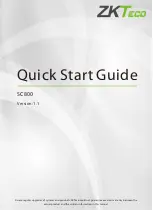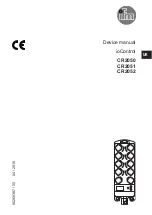
Examples and tips
PROGRAMMING MANUAL
282
R
e
vi
si
o
n
1
.0
Does an origin search in forward direction using the input selected in
DATUM_IN
as homing switch and searches the next Z mark of an
encoder.
•
DATUM(6)
Does an origin search in reverse direction using the input selected in
DATUM_IN
as homing switch and searches the next Z mark of an
encoder.
For more details on these pre-defined homing sequences, see section
3.2.78.
In some situations, more complex homing sequences are required:
•
Absolute switch origin search plus limit switches.
•
Origin search against limit switches.
•
Origin search against hardware parts blocking movement.
•
Origin search using encoder reference pulse "Zero Mark".
•
Static origin search, forcing a position from a user reference.
•
Static origin search, forcing a position from an absolute encoder.
fig. 25
The figure shows a general origin search scenario. This simple origin search
sequence has 3 steps:
1. Search for a signal.
2. Search for another signal.
3. Move the axis to a predefined position.
It is important to note that, before any homing procedure is executed, it is
necessary to set the axis parameters
UNITS
,
REP_DIST
and
REP_OPTION
, and Servo Driver parameters Pn202, Pn203 and Pn205
properly and in accordance with the mechanical system and desired
ON
min. limit switch
origin limit switch
moving part
max. limit switch
encoder
OFF
ON OFF
OFF
ON
OFF
Note
For safety reasons, limit switches are normally closed. For this
reason, in this figure and in the following figures in this section, the
low signal level is indicated as ON, and the high signal level is indi-
cated as OFF.
















































